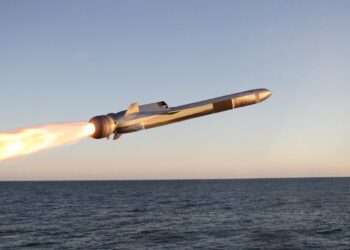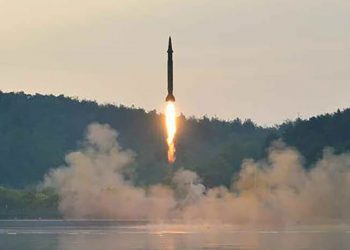US Air Force,
Edwards AFB CA: America's only staged combustion liquid booster rocket engine now in development marked an important milestone July 12 at NASA's Stennis Space Center near Bay St. Louis, Miss. The engine reached steady-state 100-percent operation, demonstrating mainstage performance for the first time.
The engine cycle demonstrater is dubbed the Integrated Powerhead Demonstration, or IPD. It is a ground demonstrater engine combining the latest innovations in rocket engine propulsion technologies. The IPD program has conducted 21 of 26 tests and accumulated 300 seconds of operation up to the latest 100-percent power level test.
The IPD engine has been designed, developed and tested through the combined efforts of Pratt and Whitney Rocketdyne, Inc. and Aerojet, under the program direction of the Air Force Research Laboratory and technical direction of the National Aeronautics and Space Administration's Marshall Space Flight Center.
Its technologies are directed at achieving the goals of the Integrated High Payoff Rocket Propulsion Technology program and NASA's Exploration Technology Development program.
Capable of generating about 250,000 pounds of thrust, the engine technology uses liquid oxygen and liquid hydrogen in a first U.S. demonstration of the full-flow, staged-combustion, or FFSC, cycle. It has been designed as a re-usable engine system, capable of up to 200 flights, and features high-performance, long-life technologies and materials.
This FFSC cycle uses a fuel-rich pre-burner to drive the fuel turbopump, and an oxidizer-rich pre-burner to drive the oxygen turbopump. Because all of the propellants are burned in the preburners, more mass flow is available to drive the turbines than in a conventional staged combustion cycle.
The additional power enables lower turbine temperatures and less stress, translating into longer turbine life, a key factor for reusable rocket engine life.
In addition, the use of oxidizer-rich gas in the oxidizer turbine and fuel-rich gas in the fuel turbine eliminates the need for a complex propellant seal for the pumps. This increases engine system reliability. The innovation also includes a hydrostatic bearing technology that literally floats the turbine shaft on rocket propellants, eliminating wear and enabling high reusability.
“Our team, composed of engineers and managers from AFRL, the NASA Marshall Space Flight Center, the NASA Stennis Space Center, Pratt and Whitney Rocketdyne and Aerojet, is incredibly talented and the best the industry and government have to offer,” said Stephen Hanna, IPD program manager for AFRL.
“The partnership that we have forged between AFRL, NASA and industry is second to none,” Mr. Hanna said. “We continue to pave new technological ground each day, currently developing and test firing the first new liquid rocket engine cycle in the last 35 years. That dates back to the early development days of the space shuttle's main engine.”
“Our intent is to validate new propulsion technologies that can be used in a new generation of rocket engines,” said Don McAlister, Pratt and Whitney Rocketdyne IPD program manager. “The IPD itself will not be flown, but its technologies will find their way into future rocket engines and will be especially valuable for NASA's vision for space exploration.”
“Reaching 100 percent power level is a major milestone in testing the IPD engine,” said Stennis Space Center Director Rick Gilbrech. “Technologies developed through the IPD could benefit the vision for space exploration — to return humans to the moon, Mars and beyond.”
The project is managed from AFRL at Edwards Air Force Base, Calif., with technical support from NASA's Marshall Space Flight Center. Pratt and Whitney Rocketdyne is the systems integrator and also provides the fuel turbopump, oxidizer turbopump, main injector, main combustion chamber, engine control system and other engine systems components. Aerojet provides the fuel and oxidizer preburners, nozzle and fuel pre-mixer. Test operations and facilities are provided by NASA's Stennis Space Center.









